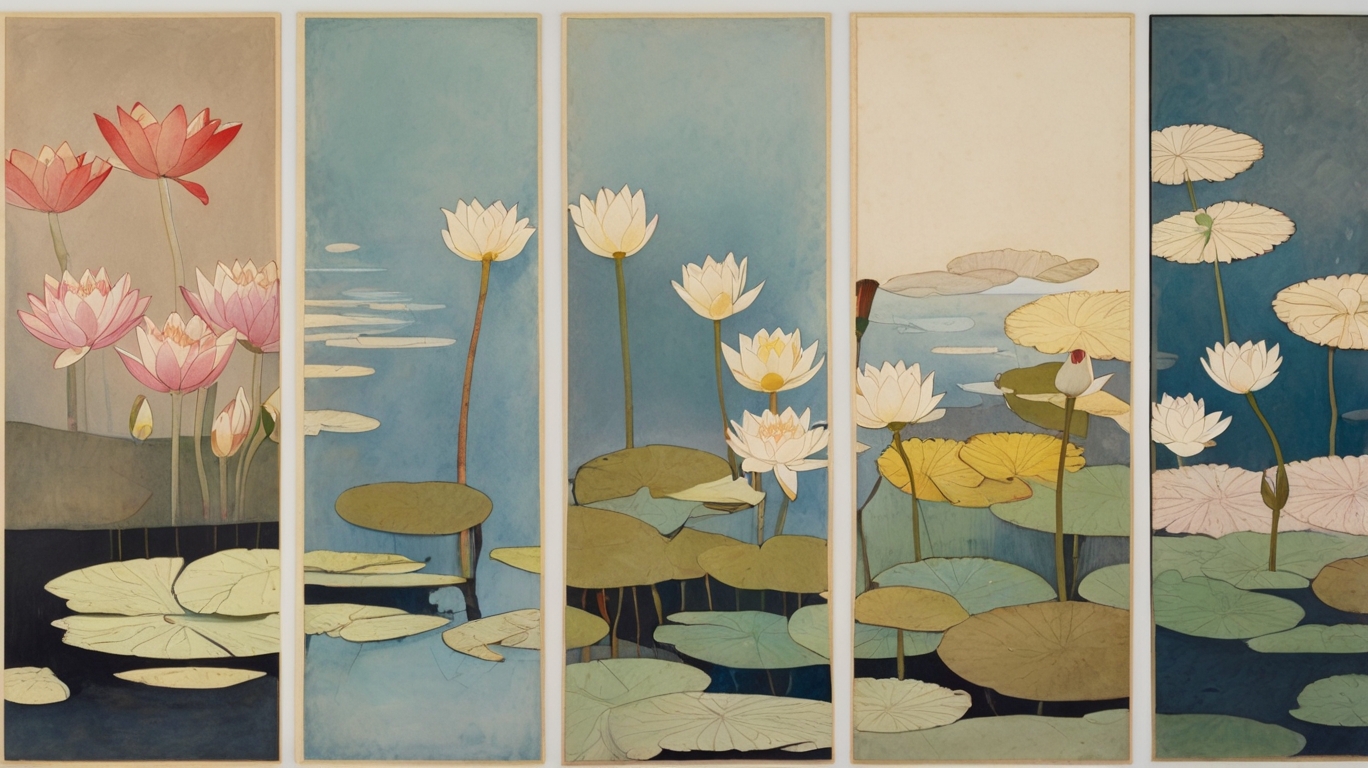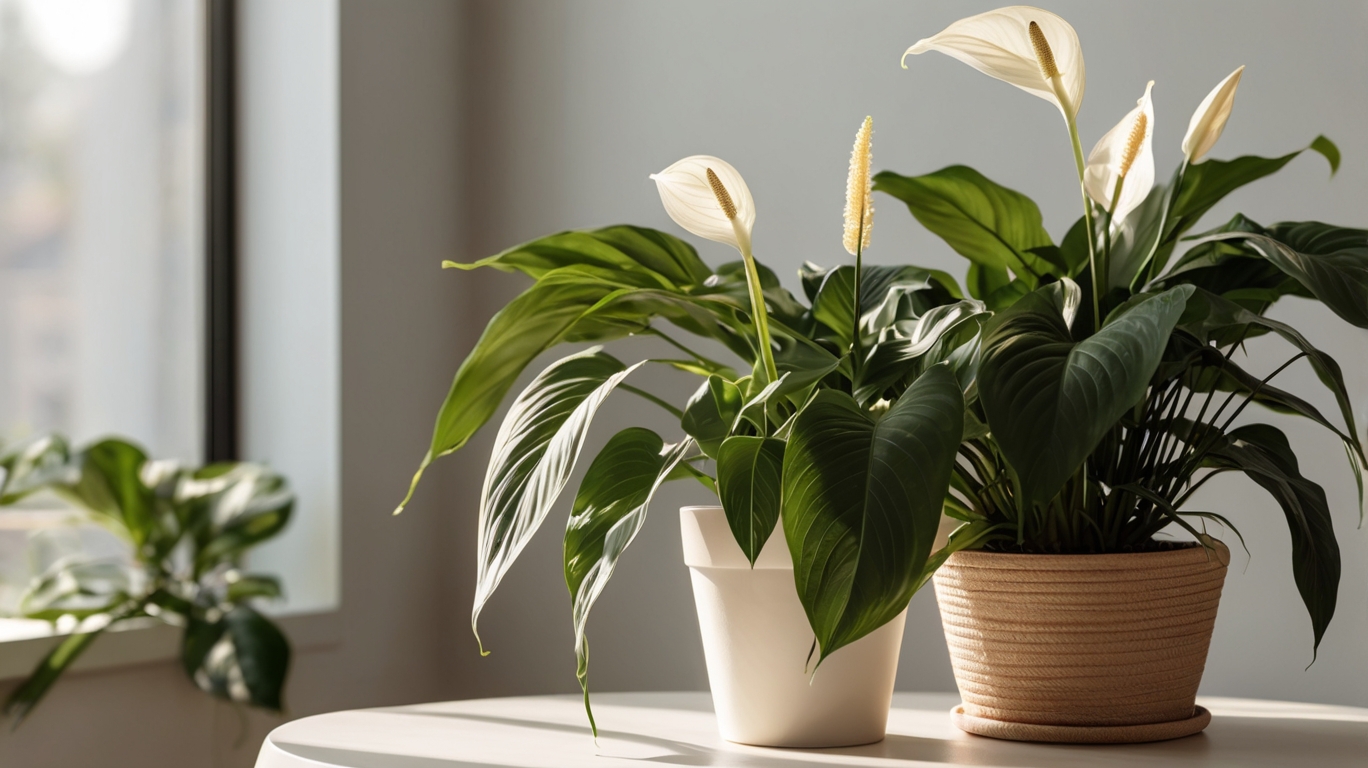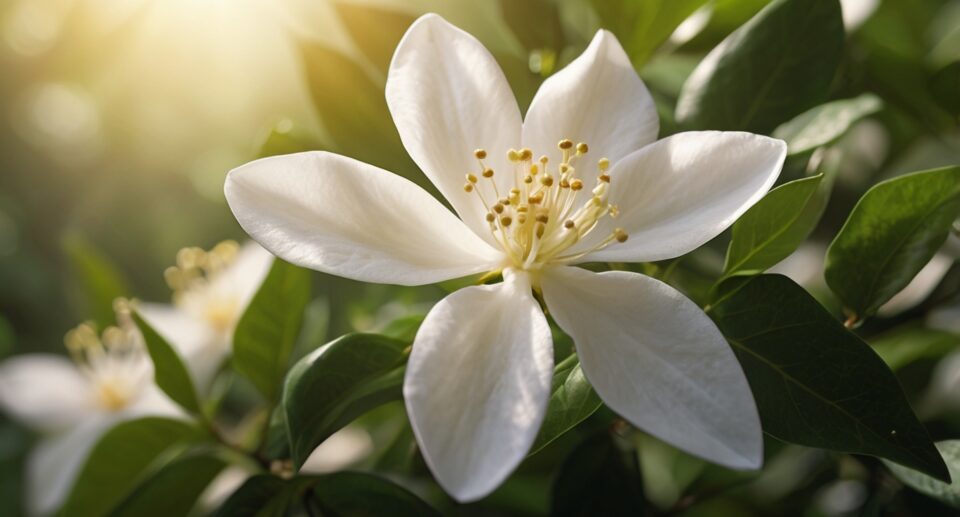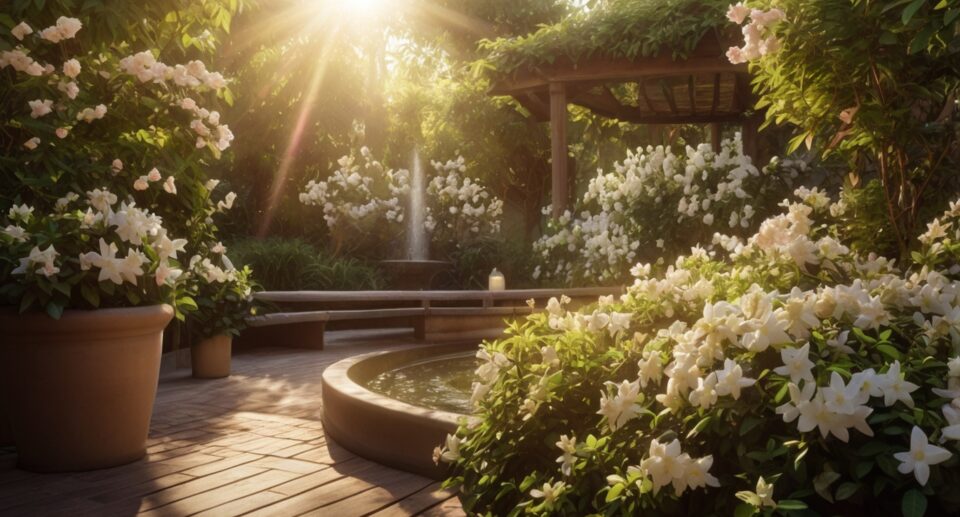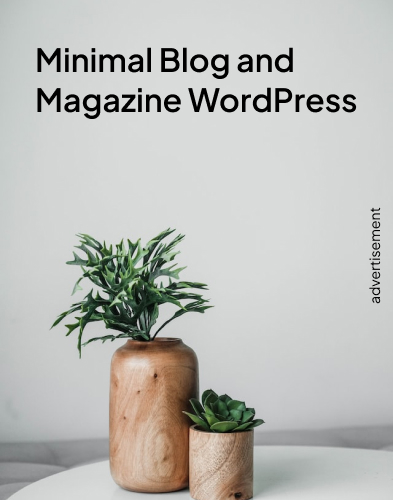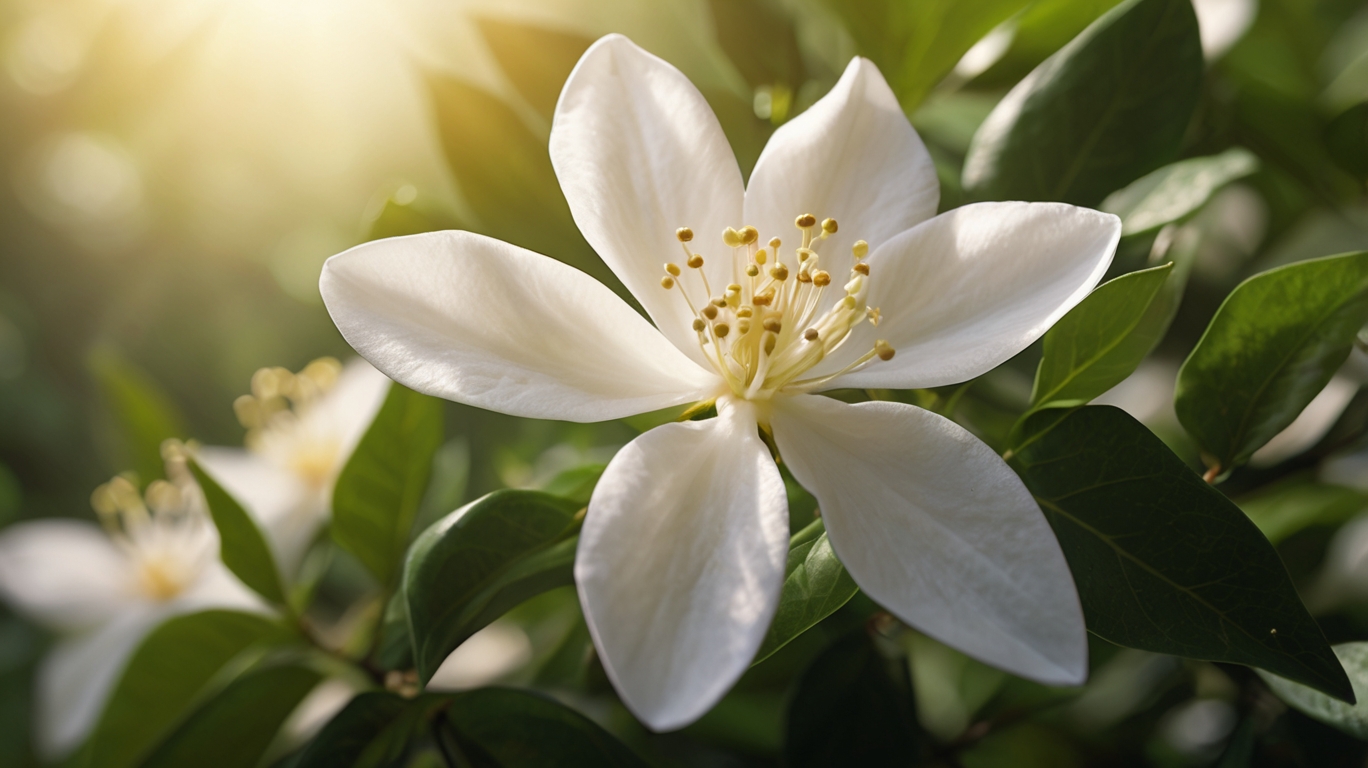When Jasmine Plants Flower: 5 Joyful Milestones for Gardeners
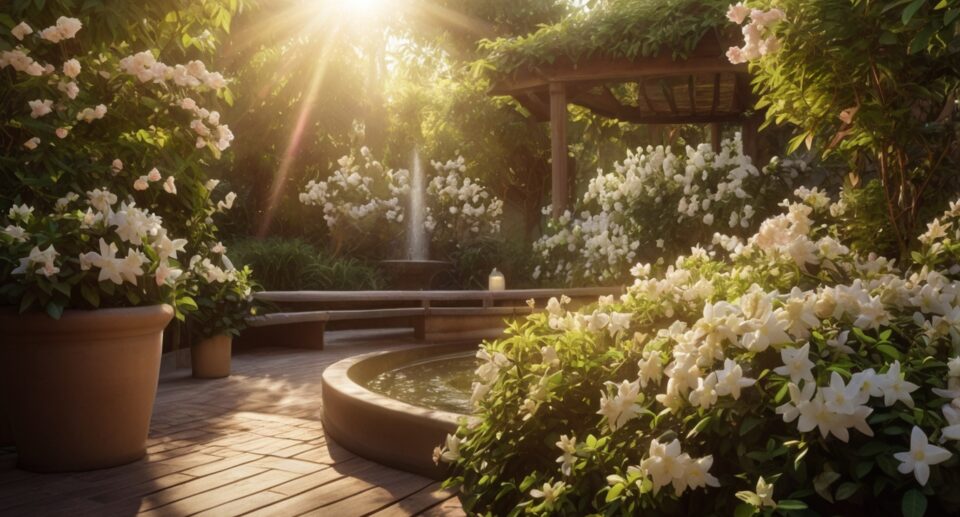
Introduction to Jasmine Plants and Their Blooming Cycles
Jasmine plants, belonging to the genus Jasminum, are celebrated for their aromatic blossoms and ornamental value in gardens. These plants, native to warm and tropical climates, encompass over 200 species, each with unique characteristics. Gardeners often choose jasmine for its sweet-smelling flowers, which are widely used in perfumes, teas, and essential oils. Understanding the life cycle and blooming patterns of jasmine plants is crucial for cultivating healthy, vibrant specimens.
Jasmine thrives in a variety of settings, ranging from compact garden pots to expansive outdoor landscapes. While most jasmine species are vines, some grow as shrubs. Species such as Arabian jasmine (Jasminum sambac) and Common jasmine (Jasminum officinale) are particularly popular due to their prolific blooms and adaptability. The growth of these plants is deeply influenced by climatic conditions, light exposure, and soil quality, factors that directly affect their blooming cycles.
Typically, jasmine plants produce flowers during specific seasonal windows. Many species, like Common jasmine, bloom predominantly in summer, while others, such as Winter jasmine (Jasminum nudiflorum), display flowers during colder months. The blooming period of jasmine is influenced by temperature fluctuations, daylight hours, and the plant’s overall health. Periods of rest often occur between flowering cycles, allowing plants to conserve energy for future growth.
To encourage regular blooms, jasmine plants require appropriate care, including consistent watering, proper pruning, and nutrient-rich soil. Gardeners often utilize organic fertilizers to promote flowering, especially during active growth phases. Additionally, pruning immediately after flowering can help shape the plant and prepare it for subsequent blooming cycles. By observing these practices, gardeners can better align their efforts with the natural rhythms of jasmine plants.
Understanding the Different Types of Jasmine Plants
Jasmine plants are popular for their fragrant flowers, delicate beauty, and versatile growth habits. Understanding the varieties of jasmine can help gardeners select the best types for their climate, landscape, and personal preferences.
Common Types of Jasmine Plants
There are several types of jasmine plants, each offering unique characteristics. Some of the most notable varieties include:
- Common Jasmine (Jasminum officinale): Known for its white star-shaped flowers, common jasmine is often cultivated for its intense fragrance and sprawling vine-like growth. It thrives in warmer climates and blooms throughout summer and early fall.
- Arabian Jasmine (Jasminum sambac): A tropical variety, Arabian jasmine produces small, highly fragrant white flowers. It’s frequently used to make jasmine tea and can bloom year-round in suitable conditions.
- Winter Jasmine (Jasminum nudiflorum): Unlike many jasmine types, winter jasmine is non-fragrant. It is appreciated for its bright yellow blossoms, which appear during late winter or early spring, adding vibrant color to dormant landscapes.
- Pink Jasmine (Jasminum polyanthum): This fast-growing plant is prized for its aromatic pink buds that open into white flowers. It blooms in late winter to early spring and is suitable for gardens or indoor pots.
- Italian Jasmine (Jasminum humile): An evergreen shrub, Italian jasmine produces lightly fragrant yellow flowers. It’s ideal for sunny gardens and grows well in warmer climates.

Growth Habits and Uses
Jasmine plants typically fall into two categories: climbing vines or shrub-like forms. Climbers, like pink jasmine and common jasmine, are great for trellises, fences, and walls, while shrub varieties, such as Italian jasmine, work well for hedges or standalone accents. These varieties are not only valued for their beauty but also for their contributions to perfumery and tea production.
Each jasmine type has specific blooming periods, watering needs, and light preferences. Gardeners should consider these factors when choosing a jasmine variety to ensure optimal growth and flowering timelines.
Optimal Growing Conditions for Jasmine Flowering
Jasmine plants require specific environmental conditions to thrive and produce their signature fragrant blossoms. Understanding these requirements allows gardeners to nurture healthy plants and maximize flowering potential. This section explores the essential factors contributing to jasmine’s optimal growth and bloom cycle.
1. Sunlight Needs
Jasmine plants thrive in full sun to partial shade, depending on the specific variety. Ideally, they should receive at least 4 to 6 hours of direct sunlight daily. While varieties like Arabian jasmine flourish in consistently sunny locations, certain species like winter jasmine can tolerate slightly shaded areas. Inadequate light reduces blooming, as jasmine relies on ample sunlight for energy during the flowering process.
2. Temperature Requirements
Jasmine is naturally suited to warm climates, flourishing in temperatures between 60°F to 75°F. Cold-sensitive varieties may suffer damage if exposed to frost or temperatures below 40°F. In colder regions, growing jasmine indoors or using protective coverings during winter months can help maintain optimal conditions. Warm nighttime temperatures further support healthy blooming.
3. Soil Preferences
The root system of jasmine performs best in well-draining, nutrient-rich soil. A slightly acidic pH level, between 6.0 and 6.5, enhances nutrient availability. Loamy or sandy soils are ideal, as they prevent waterlogging, which can hinder growth or cause root rot. Adding organic compost or mulch promotes soil fertility and retains moisture.
4. Watering Practices
Consistent moisture is a cornerstone for jasmine plants. While they prefer moist soil, extreme overwatering can lead to problems such as fungal infections. Regular watering, especially during dry periods or active growth phases, ensures hydration without oversaturation. Monitoring soil moisture helps strike the right balance.
5. Fertilizing Routine
Jasmine benefits from periodic feeding to support vigorous blooming. Balanced fertilizers with nitrogen, phosphorus, and potassium ratios are effective, particularly during spring and summer growth periods. Overfertilization, however, should be avoided, as excessive nutrients may promote foliage growth at the expense of flowers.
6. Pruning and Maintenance
Pruning helps jasmine maintain its shape and encourages new growth. Removing dead stems and faded flowers redirects energy to healthier parts of the plant. This maintenance practice should be performed after the flowering season to avoid disrupting potential blooms.
By addressing these environmental factors, gardeners can ensure optimal conditions for jasmine plants, encouraging regular and robust flowering cycles.
Seasonal Variations: When Jasmine Plants Typically Bloom
Jasmine plants are known for their fragrant flowers and alluring beauty, but their blooming cycles often depend on the specific variety as well as environmental factors. While jasmine plants can thrive in various climates, their flowering patterns align closely with seasonal changes. Understanding these variations helps gardeners anticipate when their plants are likely to bloom.
Different species of jasmine exhibit unique seasonal tendencies. For example:
- Common Jasmine (Jasminum officinale) typically blooms from late spring to early fall, showcasing clusters of white or pale-yellow flowers during the warmer months. This variety thrives in moderate climates under bright yet filtered sunlight.
- Winter Jasmine (Jasminum nudiflorum) stands out for blooming during the cooler months, often producing yellow flowers in late winter or early spring. Its cold tolerance makes it ideal for gardens in regions with harsh winters.
- Arabian Jasmine (Jasminum sambac) is a tropical variety that blooms year-round in favorable climates, though peak flowering often occurs during the summer when temperatures are high and humidity levels are sufficient.
Environmental factors play a significant role in jasmine’s flowering timeline. Light exposure is critical, as most jasmine varieties require several hours of sunlight daily to initiate bloom cycles. Seasonal changes in daylight hours significantly impact flowering periods, with longer days providing the necessary energy for blooming. Similarly, temperature fluctuations in spring and summer encourage buds to form, while frost or extreme cold can delay blooms.
Transitioning into autumn, many jasmine varieties enter a resting phase, conserving energy as daylight decreases and temperatures cool. However, pruning and providing adequate care during these dormant periods can stimulate robust flowering in subsequent seasons. Gardeners should also ensure consistent watering and fertilization routines tailored to the specific jasmine variety, as seasonal conditions can affect the plant’s nutrient needs.
By recognizing the nuances of jasmine blooms across different seasons and varieties, gardeners can create optimal conditions to enjoy the enchanting blossoms year after year.
Key Factors That Influence Jasmine Blooming
Jasmine plants are renowned for their fragrant flowers, but their blooming depends on a variety of environmental and care-related factors. Understanding these influences can help gardeners ensure healthy flowers throughout the growing season.
1. Light Requirements
Jasmine thrives in bright, indirect sunlight for most of the day. While full sun promotes abundant flowering, excessive direct sunlight can scorch the leaves and hinder bloom development. Indoor jasmine plants may require supplemental lighting in low-light conditions to mimic ideal outdoor settings.
2. Temperature and Climate
Temperature plays a significant role in jasmine blooms. Warm climates are optimal, with day temperatures ranging between 75–85°F (24–29°C) and cooler nights around 60°F (15°C). In colder areas, jasmine varieties should be grown indoors or sheltered from frost during winter months, as cold temperatures can cause dormancy or plant stress.
3. Humidity Levels
High humidity levels enhance jasmine’s blooming capability, especially for tropical varieties. Dry indoor environments may require the use of a humidifier or placement near water sources like pebble trays. Outdoor jasmine in arid regions may benefit from regular misting to maintain hydration and prevent flower drop.
4. Soil Quality and Drainage
Rich, well-draining soil is essential for jasmine plants to flourish. Soil pH between 6.0 and 7.5 is ideal, as overly acidic or alkaline soils can adversely affect nutrient absorption. Amending the soil with organic matter, such as compost, ensures ideal texture and nutrient availability, fostering healthy blooms.
5. Watering Practices
Consistent watering is critical for jasmine’s growth and flowering. Overwatering can lead to root rot and reduced blooms, while underwatering may result in dryness that inhibits flower production. Maintaining evenly moist soil, especially during active flowering periods, is pivotal for healthy development.
6. Fertilizer Application
Proper fertilization supports jasmine’s blooming cycle. Balanced, phosphorus-rich fertilizers promote flower formation, while excessive nitrogen leads to more foliage than flowers. Gardeners should use fertilizer sparingly during spring and summer months to enhance bloom production without risking over-fertilization.
7. Pruning Techniques
Pruning encourages new growth, which is a precursor to blooms. Removing dead or overcrowded branches improves air circulation and light penetration throughout the plant. Pruning should ideally be done after flowering periods to prevent cutting off buds that might bloom later.
8. Variety Selection
The jasmine species grown significantly impacts the blooming period and conditions required. For example, common jasmine (Jasminum officinale) prefers sunny spots, while Arabian jasmine (Jasminum sambac) adapts well to partial shade. Selecting the right variety for local conditions ensures a successful bloom.
By catering to these factors and tailoring care to the type of jasmine planted, gardeners can optimize flowering and produce vibrant, fragrant blooms throughout the year.
Common Blooming Months for Popular Jasmine Varieties
Jasmine plants showcase their enchanting flowers at various times throughout the year, depending on the specific variety and growing conditions. Each type of jasmine has its own typical blooming period, allowing gardeners to enjoy their fragrant beauty across different seasons. These are the common months associated with the flowering phases of popular jasmine varieties:
1. Common Jasmine (Jasminum officinale)
Common jasmine, also known as poet’s jasmine, is among the most widely grown types. This variety typically blooms from late spring to early fall, with peak flowering occurring in June through September. Its delicate white blossoms release their signature scent during warm summer evenings.
2. Arabian Jasmine (Jasminum sambac)
Arabian jasmine, often treated as a tropical species, is celebrated for its fragrant blooms which can appear year-round under ideal conditions. In temperate climates, its flowering is most vigorous between May and October, coinciding with warmer weather.
3. Star Jasmine (Trachelospermum jasminoides)
Though technically not a true jasmine, star jasmine mimics the fragrance and appearance of traditional varieties. It blooms prolifically during late spring and early summer, usually April through June, depending on the climate.
4. Winter Jasmine (Jasminum nudiflorum)
Winter jasmine stands out as a cold-season bloomer, often producing its cheerful and bright yellow flowers during January and February. It is valued for bringing color to gardens in winter.
5. Spanish Jasmine (Jasminum grandiflorum)
Spanish jasmine is prized for its extended blooming period, typically flowering from spring through late fall, peaking in the months of July and October. This variety thrives in warm, sunny locations.
6. Night-Blooming Jasmine (Cestrum nocturnum)
While technically a jasmine relative, night-blooming jasmine produces its aromatic flowers under moonlight. Flowering primarily occurs from mid-spring to summer, often stretching from April to August, accompanied by a sweet, lingering scent.
Tip for gardeners: Variations in bloom times may occur depending on regional climates, soil health, and level of care provided to these plants. Monitoring local conditions can help achieve optimal flowering results.

How Climate and Region Impact Jasmine Flowering
The growth and flowering cycle of jasmine plants are heavily influenced by the prevailing climate and the geographical region in which they are cultivated. These environmental factors dictate key aspects of the plant’s life, such as temperature thresholds, light availability, and moisture levels, that directly affect its ability to bloom.
In tropical and subtropical climates, jasmine plants thrive due to the warm temperatures and abundant sunlight. Regions that maintain temperatures between 68°F and 80°F during the growing season provide optimal conditions for flowering. Here, jasmine often produces blooms year-round, especially if the plant receives consistent watering and has rich, well-drained soil to support its growth.
For those growing jasmine in temperate regions, seasonal variation plays a critical role. The flowering period is typically more defined, with jasmine plants blooming prominently in late spring and summer. Cooler winters may lead to dormancy, during which the plant conserves energy, preparing for robust growth once warmer months arrive. Hardy jasmines, such as winter jasmine (Jasminum nudiflorum), exhibit blooms even in the colder months, adapting to the regional climate.
In arid regions, flowering is often dependent on precise irrigation and shelter from extreme heat. Here, jasmine plants are more vulnerable to dehydration and scorching sunlight, which can impact bloom size and frequency. Conversely, in high-humidity zones, while jasmine may flourish due to moisture, excess dampness can increase the risk of fungal infections, potentially stunting flowering.
Altitude also has an effect on jasmine growth. Higher elevations with cooler nights may delay blooming, while warmer valleys with suitable microclimates encourage faster floral development. By adapting care practices to the specific regional conditions, gardeners can maximize the Jasmine plant’s flowering potential.
Tips to Encourage Year-Round Jasmine Blooms
Encouraging jasmine plants to bloom year-round requires understanding their specific needs and providing optimal conditions to stimulate consistent flowering. Gardeners can apply several techniques and practices to achieve this goal effectively.
Optimize Light Conditions
Jasmine thrives in bright, indirect sunlight. To promote blooming throughout the year, the plant should receive 4–6 hours of sunlight daily. If growing indoors, positioning the plant near a south-facing window or using supplemental grow lights can help maintain adequate light levels. Adjust the placement as seasons change to ensure the plant benefits from consistent exposure.
Ensure Proper Watering
Maintaining the right balance of moisture is critical. Jasmine plants prefer well-draining soil but should not be left completely dry. Watering should be consistent, ensuring the soil remains slightly moist but not soggy. During colder months, reduce watering frequency, taking care not to overwater.
Fertilize Regularly
To encourage blooming year-round, jasmine plants benefit from regular feeding. Using a balanced liquid fertilizer during the growing season provides the necessary nutrients for healthy flower production. Switching to a phosphorus-rich fertilizer in early spring can help stimulate budding. Fertilization should be reduced or paused during dormancy periods.
Prune Strategically
Timely pruning supports year-round blooms by encouraging new growth. After the flowering cycle, remove spent blooms and trim back overgrown stems. Regular pruning improves air circulation and redirects the plant’s energy toward producing new flowers. Avoid over-pruning, as this can hinder growth.
Manage Temperature and Humidity
Jasmine prefers warm temperatures and moderate humidity levels. Ideal growing conditions include temperatures between 60–75°F (15–24°C). During winter, indoor plants should avoid cold drafts, while outdoor varieties may require protection from frost. To sustain humidity indoors, mist the plant regularly or place it near a humidifier.
Monitor for Pests and Diseases
Common pests like aphids, spider mites, and whiteflies can interfere with blooming. Inspect the plant regularly for any signs of infestation and treat promptly using horticultural oil or insecticidal soap. Likewise, combating fungal diseases early ensures the plant remains healthy enough to flower consistently.
Providing jasmine with attentive care tailored to its growth habits enhances the likelihood of enjoying fragrant blooms for months on end. Adjustments may be necessary based on seasonal changes and environmental factors.
Common Problems Affecting Jasmine Flowering and How to Address Them
Jasmine plants, renowned for their fragrant blooms, can sometimes fail to flower due to a variety of factors. Identifying the underlying issues and addressing them promptly is crucial to encouraging healthy flowering.
1. Inadequate Sunlight
Jasmine thrives in bright, indirect light. Insufficient exposure to sunlight can stunt flower production. If the plant is in a shady spot, it should be relocated to an area receiving at least 4-6 hours of sunlight daily. For indoor plants, placing them near a sunny window or using grow lights can resolve this issue.
2. Improper Watering Practices
Overwatering or underwatering is a common challenge. Jasmine plants prefer well-draining soil that is evenly moist but not waterlogged. To prevent root rot, the gardener should allow the top inch of soil to dry out before watering again. Conversely, if the plant appears wilted and the soil is dry, watering more consistently may help.
3. Nutrient Deficiency or Overfertilizing
An imbalance of nutrients, particularly low phosphorus levels, can hinder flowering. A balanced fertilizer or one higher in phosphorus should be applied during the growing season. Overfertilizing with nitrogen-heavy products may lead to excessive foliage at the expense of blooms, so care should be taken with fertilizer choice.
4. Pruning at the Wrong Time
Over-pruning or cutting jasmine at the wrong time can remove flower buds. Since many jasmine varieties flower on old growth, pruning should be performed immediately after flowering ends to avoid cutting off next season’s buds.
5. Temperature Stress
Extreme temperatures, whether too high or too low, can impede flowering. Jasmine prefers moderate temperatures between 60-75°F. Keeping indoor plants away from drafts or heaters and protecting outdoor plants from frost can prevent stress.
Addressing these problems effectively requires noting changes in the jasmine’s environment and responding accordingly. Proper care ensures abundant flowering that enriches any garden or home.
Frequently Asked Questions About Jasmine Plant Blooming
1. When do jasmine plants typically start blooming?
Jasmine plants usually start blooming during late spring to summer, depending on the specific variety and environmental conditions. Some species, such as winter jasmine (Jasminum nudiflorum), bloom in colder seasons, while Arabian jasmine (Jasminum sambac) may bloom year-round in tropical climates.
2. What factors influence the blooming time of jasmine plants?
The blooming time is influenced by several factors, including temperature, light exposure, soil quality, and proper care. Jasmine thrives in bright, indirect sunlight and well-draining, nutrient-rich soil. Consistent watering and occasional pruning also encourage timely flowering.
3. How long do jasmine flowers stay in bloom?
The blooming duration varies by species. Common jasmine (Jasminum officinale) can bloom continuously for several weeks, while star jasmine (Trachelospermum jasminoides) may have blooms lasting a few weeks during late spring. Providing optimal care can extend the blooming period.
4. Why is my jasmine plant not blooming?
A jasmine plant may fail to bloom due to inadequate light, insufficient nutrients, overwatering, or lack of pruning. Placing the plant in a sunnier spot, using balanced fertilizer, and ensuring proper drainage can address the issue.
5. Can jasmine plants bloom indoors?
Yes, jasmine plants can bloom indoors if given the right conditions. They need bright, indirect sunlight and high humidity. Regular misting or placing the pot near a humidifier can help indoor jasmine thrive.
6. Do jasmine flowers have a strong fragrance?
Jasmine flowers are known for their intense fragrance, which many describe as sweet and intoxicating. The scent is usually strongest during the evening, especially for night-blooming varieties like night-blooming jasmine (Cestrum nocturnum).
7. Should jasmine plants be pruned to promote blooming?
Pruning can stimulate blooming in jasmine plants. Remove dead or weak branches in late winter or early spring to direct energy toward new growth. Avoid heavy pruning during the blooming phase, as this may reduce flower production.
8. Is fertilization necessary for jasmine flowers?
Fertilization is beneficial for jasmine plants to produce abundant blooms. A balanced fertilizer, rich in phosphorous, encourages flowering. Apply fertilizer during the growing season but avoid over-fertilizing, as this can promote foliage over blooms.
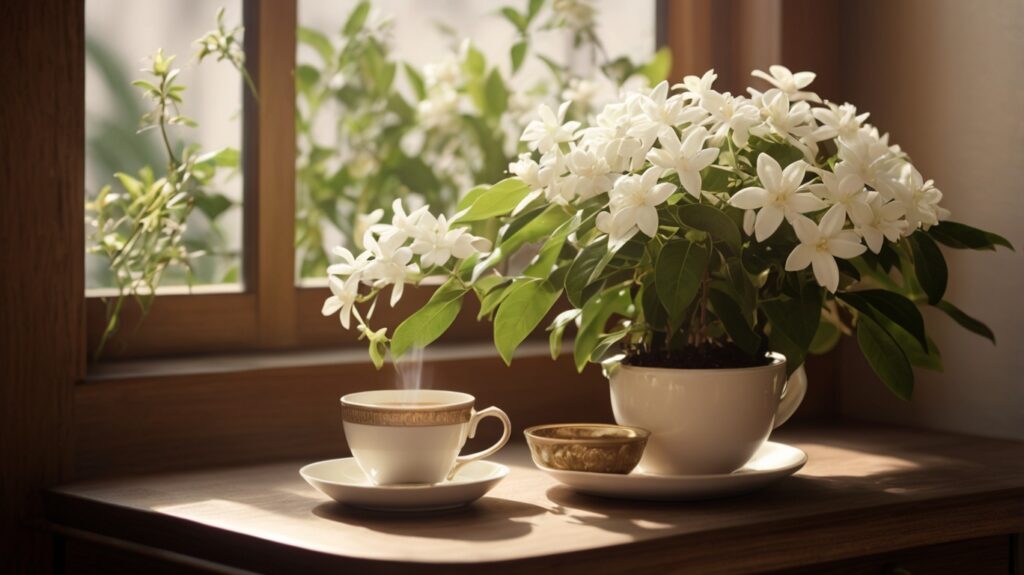
Conclusion: Making the Most of Your Jasmine Plant’s Blooming Season
To fully enjoy the beauty and fragrance of jasmine during its blooming period, a gardener must focus on essential care practices. Providing the plant with the right sunlight, water, and pruning ensures robust flowering. Jasmine thrives in sunny locations but requires protection from scorching heat. Positioning the plant in partial to full sun while ensuring good air circulation keeps it healthy throughout the season.
Regular watering is crucial, particularly during dry spells, but overwatering should be avoided to prevent root rot. Using well-draining soil and mulching helps to retain moisture while also supporting soil health. Additionally, feeding the plant with a high-phosphorus fertilizer during the growing period encourages vibrant blooms.
Pruning plays a significant role in preparing a jasmine plant for a prolific bloom. Pruning after the flowering season helps remove spent blooms and promotes new growth, ensuring an even more impressive display in the following cycle. For vining varieties, using a trellis or support system allows the plant to grow vertically, creating a stunning visual effect and helping it reach its full potential.
Monitoring for pests like aphids and mealybugs is equally important. Regular inspection and using organic pest control methods, such as neem oil, can prevent infestations from compromising the blooming process.
Lastly, gardeners can maximize enjoyment by harvesting jasmine flowers at their peak. Whether incorporated into teas, used as decorations, or simply enjoyed in the garden, these blossoms enhance the senses. By tailoring care to the plant’s specific needs, gardeners ensure a delightful blooming season that highlights the uniqueness of jasmine’s c


